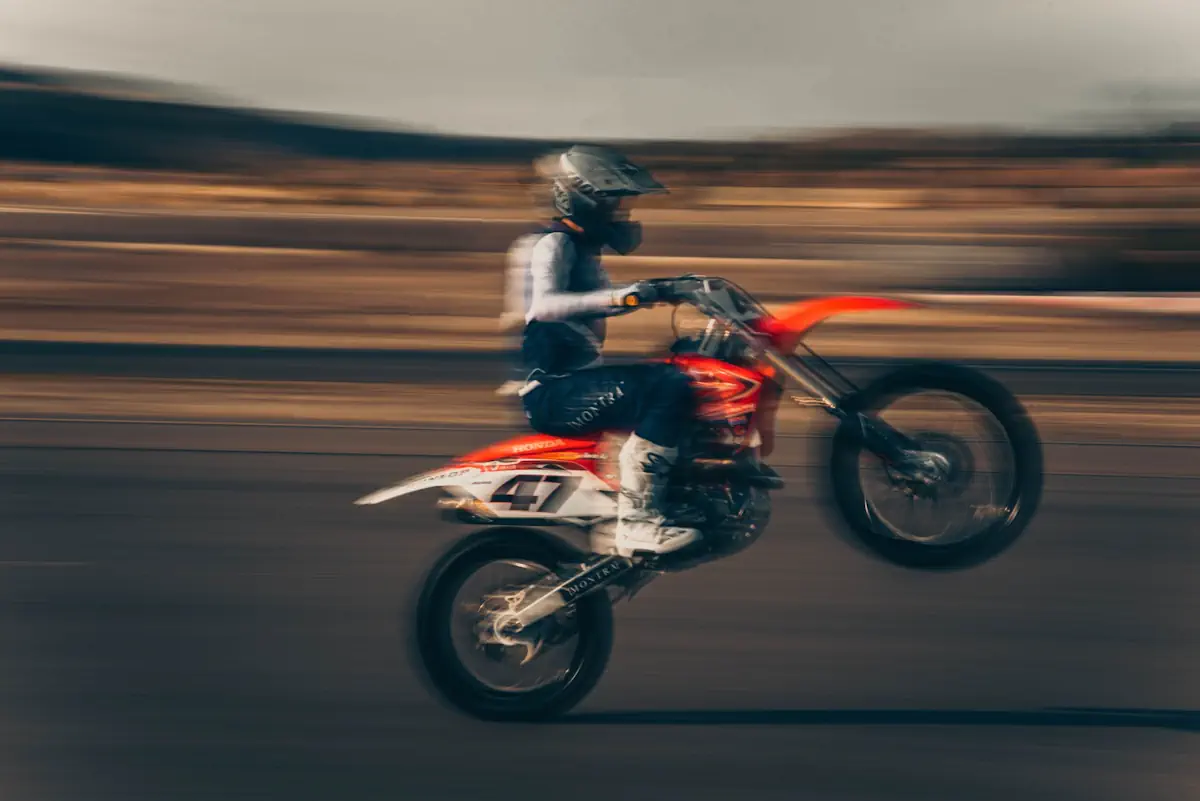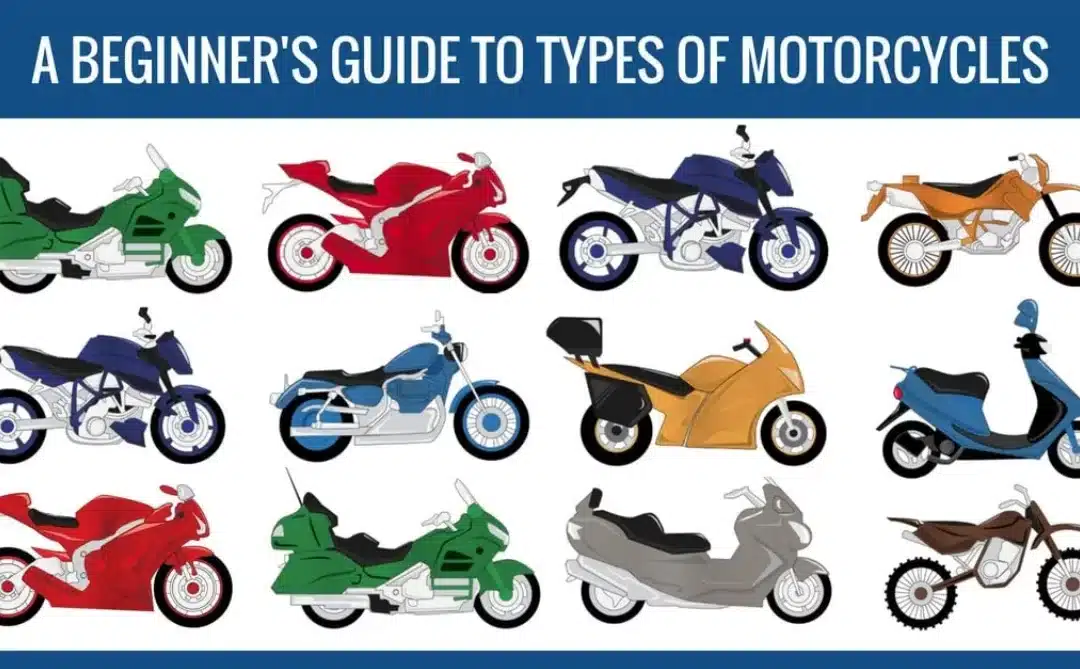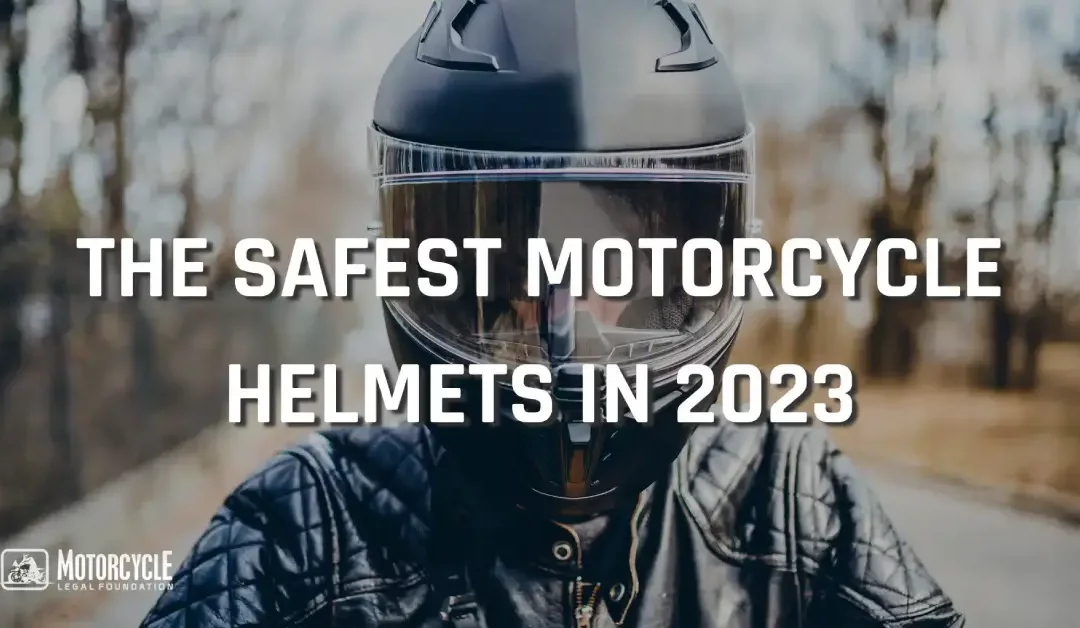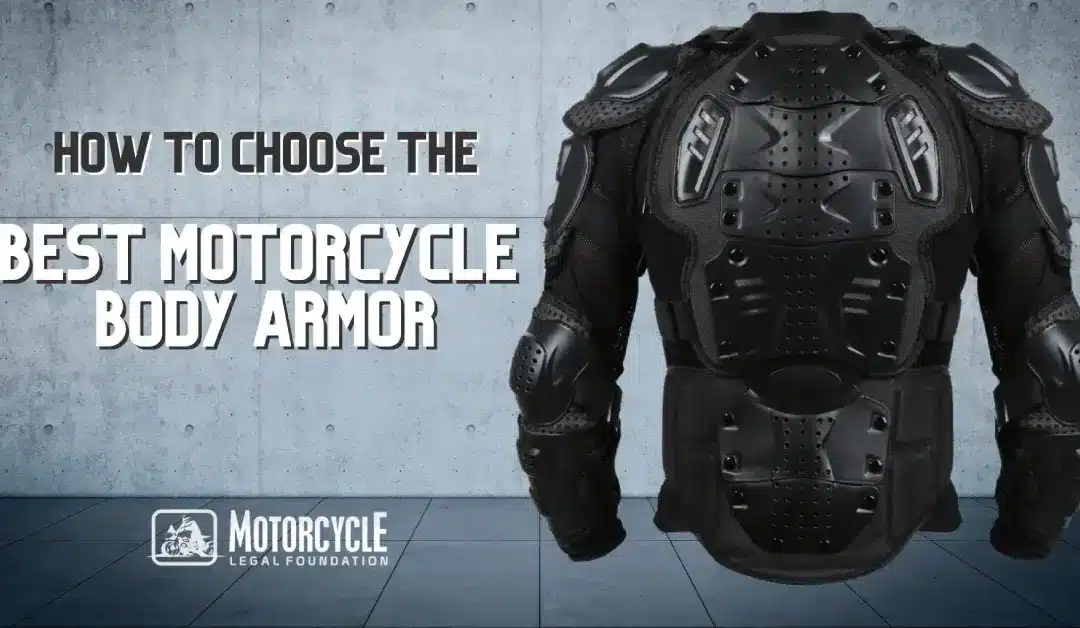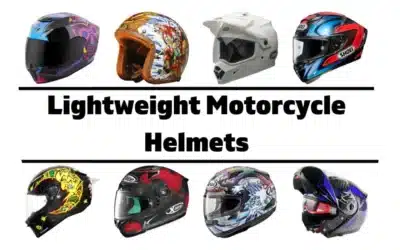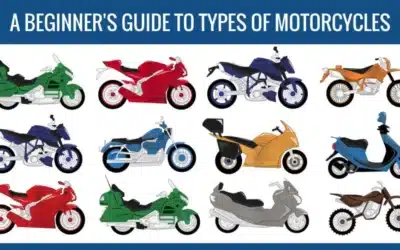If you ride a motorcycle, there’s a fairly good chance you’ve had the temptation to lift that front wheel off the pavement and ride on only the rear wheel. Depending on who you talk to about it, the maneuver, which is known as a “wheelie” or “popping a wheelie,” may be described as an exciting demonstration of a rider’s skills or a foolish stunt that can injure or kill a rider.
Most people, including many riders, subscribe to the “foolish and dangerous characterization” of the maneuver, so don’t be surprised if a successfully completed wheelie ends with a traffic ticket or being taken away in handcuffs by a police officer. A closer look at wheelies, including the physics and the dangers associated with them, may offer a better understanding of why wheelies are illegal throughout the United States, yet videos of riders performing wheelies are all over the internet.
Table of Contents
Add a header to begin generating the table of contents
Are Motorcycle Wheelies Illegal?
Judging from the fact that typing “motorcycle wheelie videos” into the Google search engine yields more than 1.2 million results may have you wondering – are motorcycle wheelies illegal? The simple answer to the question is that intentionally lifting the front wheel of a moving motorcycle off the ground is illegal in all states.
Even though popping a wheelie will lead to a fine or, in some instances, spending time in a cell of the local jail, you may have trouble finding specific mention of wheelies in your state’s traffic or criminal codes. The vast majority of states apply their reckless driving laws instead of having a law specifically dealing with lifting the front wheel of a moving motorcycle. We’ll take a closer look at the state laws later in this article.
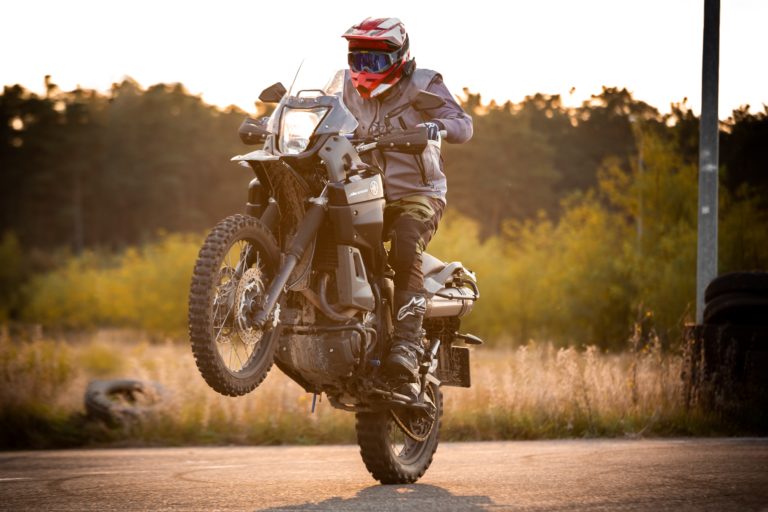
What causes a wheelie?
The front wheel of a motorcycle will lift away from the ground into a wheelie position if you use the throttle to generate a quick burst of power. It is generally easier to do a wheelie with a lightweight motorcycle equipped with a powerful engine and a short, compact wheelbase. A wheelie would be more difficult, if not impossible, to perform while riding a heavy road bike with a long wheelbase.
Another technique that relies on the clutch more than speed generated by use of the throttle to raise the front tire takes more experience and skill to execute. Regardless of the technique a rider uses, the end result is that the motorcycle continues moving forward balanced only on the rear tire.
Dangers associated with a wheelie
The first danger associated with performing a wheelie should be immediately apparent. The front wheel that lets a rider steer a motorcycle is off the road surface. While it is true that a motorcycle will generally track forward in a straight line, the risk of crashing increases when you remove the steering component.
Another consideration about wheelies is the dreaded point of no return. Yes, motorcycles tend to be well balanced, which allows a rider to lean into a turn or a long curve and recover to an upright position without crashing to the ground. There is, however, a point when you lean a motorcycle too far and cannot recover. This is the point of no return.
As you lean a motorcycle back to perform a wheelie, your position on the bike or applying too much power through the throttle may cause it to keep going backward until you crash. Other risks associated with wheelies include:
- If the motorcycle is not balanced and tracking in a straight line when you pull up on the handlebars to begin a wheelie, you cannot make corrections once the front wheel is off the ground.
- Exerting uneven pressure to the handlebars as you pull up into the wheelie position can cause the motorcycle to become unbalanced.
- The only way to control the direction of the motorcycle once the front wheel has been raised is by subtle shifts in your weight. Do not attempt a wheelie unless you have confidence in your ability to control your motorcycle through transferring weight and body position.
- When you lift the front end of a motorcycle, the headlight moves into an upward-facing position, which means your motorcycle may not be as visible to oncoming vehicles and you may not be able to see the road and obstacles that are ahead of you.
Lowering the front end to the ground after a wheelie is not without its own risks for a crash. For example, unless the front wheel is aligned to hit the ground aligned with the direction the motorcycle is traveling, the result can be a violent wobble and crash. Letting the front wheel come down too hard may cause a rider to lose control over the motorcycle and crash.
Why are wheelies illegal when nobody else is on the road?
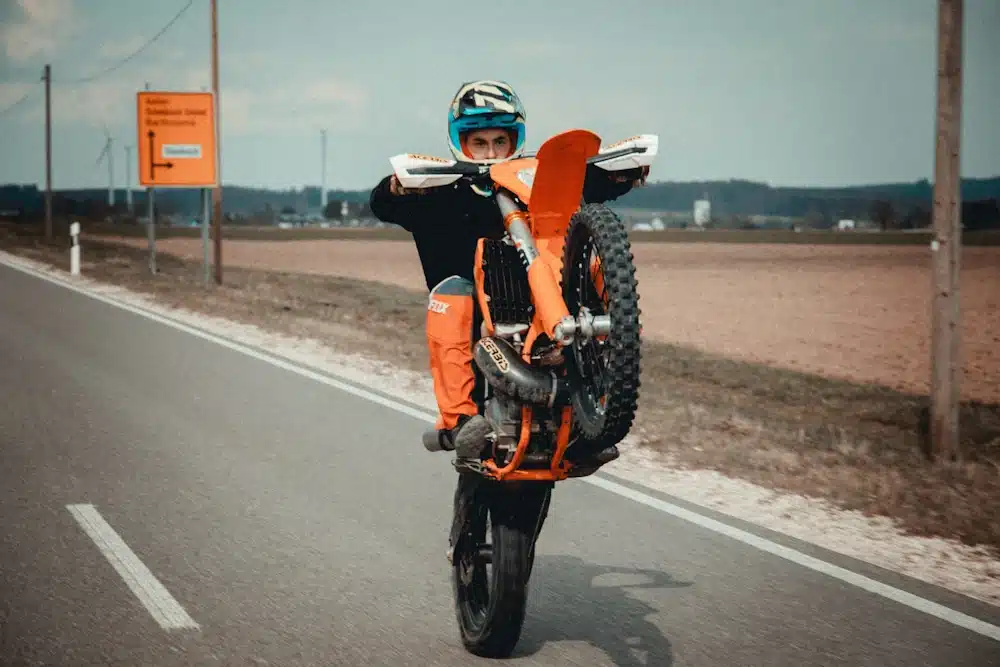
Some state laws that make the intentional lifting of a wheel off the ground an offense use language in their statute that eliminates the need for other people to be present and in danger for there to be a violation. A rider in Tennessee who does a wheelie could be charged with reckless driving when the offense takes place in a location “generally frequented by the public” without requiring the actual presence of other people.
Pennsylvania, for instance, makes it a violation for a person to ride a motorcycle while in a position that may interfere with the rider’s view or control and operation of the vehicle without requiring the presence of other people who may be in danger of being harmed. As a general rule, reckless driving rules in most states leave it to the discretion of law enforcement officers to determine whether a rider’s behavior has the potential to cause harm to other people or property.
Are Wheelies Illegal in a Parking Lot?
State laws generally permit police to enforce traffic laws in parking lots that permit access by the general public as opposed to being private property without access to the public. For example, the California statute prohibiting reckless driving states that it applies to violations committed on highways, but it also extends enforcement to violations committed in off-street parking facilities.
Have You Been Involved In A Motorcycle Accident?
Our professional legal team screens submissions and assigns cases to some of the best motorcycle lawyers in the US.
Generally, enforcement of traffic laws in parking lots, whether specifically prohibiting wheelies or prohibiting the maneuver as reckless driving, depends on the type of parking facility. Doing a wheelie in a parking lot that is open to the public allows police to enter it to enforce the traffic laws, but private property that is not open to public access may protect you from enforcement of traffic laws.
If you are riding on private property or on a parking lot that is not open to the public, you should obtain permission from the owner before riding to avoid police being called and charging you with trespassing. You also should check the laws in your state pertaining to wheelies and other risky maneuvers to ensure that doing one on private property or another location will not violate the law.
State-by-State Guide to Motorcycle Wheelie Laws
It is always a smart idea to check the motorcycle laws regarding equipment and licensing requirements before traveling to another state to ride your motorcycle. You also should check the rules pertaining to wheelies and reckless driving to make certain that you do not intentionally or inadvertently violate them.
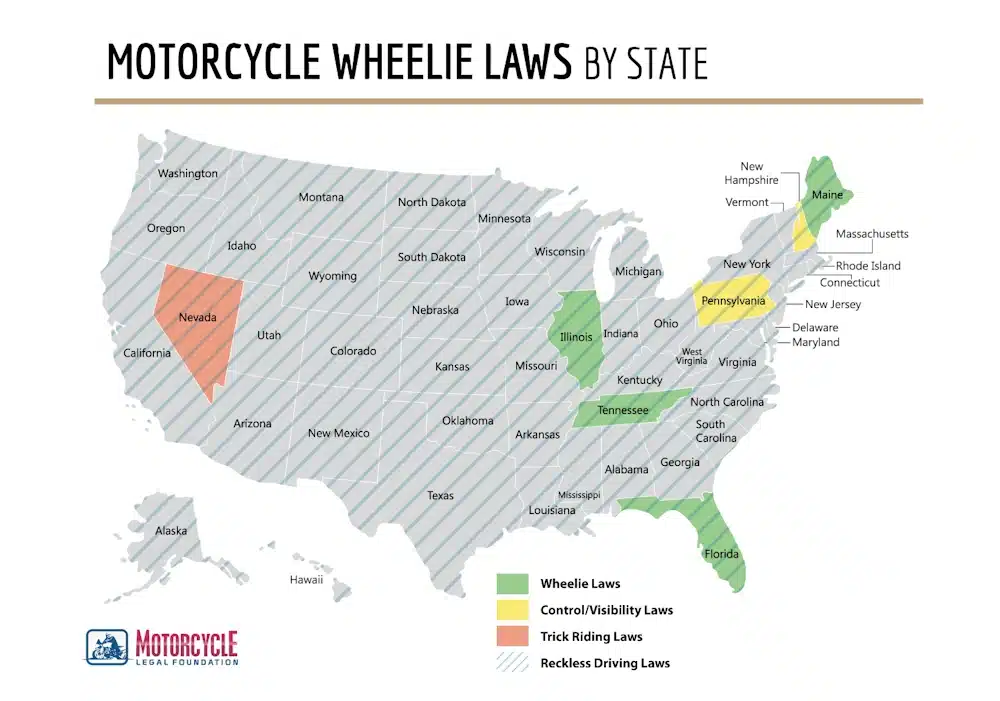
To help you get started, all states require that you obey the same traffic laws and rules of the road while riding a motorcycle as apply to other motor vehicles using the roads. Only a few states have laws specifically prohibiting doing wheelies or stunt riding on a motorcycle, but that does not mean that you will not be ticketed or taken away in handcuffs by a police officer. All states have laws prohibiting reckless driving, so popping a wheelie could fit into the definition of reckless.
The following states have laws against riding with only one wheel of your motorcycle in contact with the ground:
Two states, New Hampshire and Pennsylvania, have similar laws prohibiting operating a motorcycle in a manner that interferes with a rider’s operation or control of the vehicle or interferes with the rider’s ability to see the road that police may use when they observe someone doing a wheelie.
The remaining states do not have laws that specifically refer to riding on one wheel or performing a wheelie, but their reckless driving laws permit law enforcement officers to stop and issue tickets or arrest individuals on motorcycles who are observed engaging in wheelies or other dangerous and reckless behavior. Nevada goes further with its reckless driving law by including language prohibiting riders from engaging in trick riding while on a public highway.
Keep It Safe. Keep It Legal.
Stay safe by obeying the laws and avoiding dangerous behaviors while riding your motorcycle. If you have thoughts of trying to pop a wheelie, check out some of the videos on the internet of motorcycle riders whose wheelies did not end as well as they would have liked.
If you are in a motorcycle accident, regardless of whether a wheelie was involved, contact a motorcycle attorney right away.

